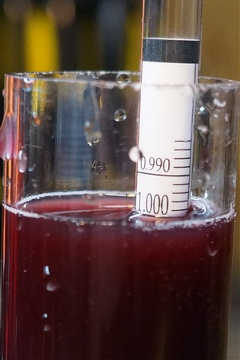Wine Kits
Making wine from kits is no big deal, right? Well, maybe. You have two ways you can make kit wines: follow the directions to the letter, or make some alterations.
If you’re new to kit wines, our suggestion is to follow the directions explicitly for the first few kits you make. Get the process of making wine from kits down-pat first. Know your steps, and don’t take any shortcuts.
Don’t add anything your kit doesn’t recommend, and don’t do anything out of order. For example, always put the kieselsol in before the chitosan (unless your kit tells you to do it). Don’t go crazy with degassing your wine (or you risk oxidizing it). Don’t forget to degas your wine, either (or your corks will pop out). Stick to the directions!
Kit wine producers pride themselves on consistency. If you make a kit wine, and you change any of the ingredients (add sugar to punch up the alcohol or use more oak to bring out other flavors), you essentially void the warranty (yes, kits are warranted, as long as you follow the directions strictly). That’s one of the reasons you don’t want to change it up in the beginning. For example, we thought about putting our first wine into oak barrels. It’s a good thing we didn’t, because we found out later that the barrels we were going to use would have ruined the wine. There is a special preparation process for using barrels, and only after you’re accomplished at the wine making process should you attempt using them.
However, once you get the hang of the process, making some slight alterations can make your wine, well, yours! Consider these alterations only after you’ve become comfortable with making kit wines:
- Add enough sugar (we use either pure cane or raw) to bring the alcohol up 1-2%. There are guides for this process, so don’t guess.
- Use oak sparingly — you can add it; but you can’t take it away. Be careful to not over-oak!
- Polish your wine by racking it one more time and letting it sit for at least three days before bottling. Be careful here, racking can introduce oxygen into the wine.
- Top-up with a like-wine. We don’t always do this, because you can always top-up with purified or spring water. Your choice. Using water doesn’t introduce any other wine to the process, which would result in “blending” your wine with another producer’s wine. On the other hand, using a like-wine doesn’t dilute the wine and may make a “blend” you like better. It’s a preference, not necessarily right or wrong. Try the same kit one way and the other if you aren’t sure of how you like it.
